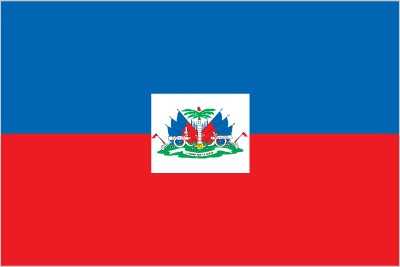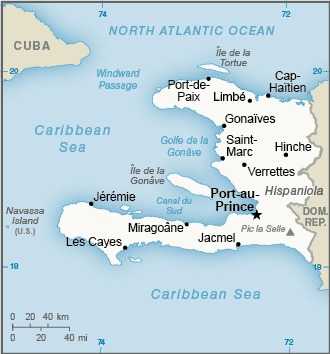Introduction
Background
In 1697, Spain ceded to the French the western third of the island of Hispaniola, which later became Haiti. The French colony, based on forestry and sugar-related industries, became one of the wealthiest in the Caribbean. Currently the poorest country in the Western Hemisphere, Haiti continues to experience bouts of political instability.
Geography
Area
total : 27,750 sq km
land: 27,560 sq km
water: 190 sq km
Climate
tropical; semiarid where mountains in east cut off trade winds
Natural resources
bauxite, copper, calcium carbonate, gold, marble, hydropower, arable land
People and Society
Population
total: 11,753,943
Ethnic groups
Black 95%, mixed and White 5%
Languages
French (official), Creole (official)
Religions
Catholic 55%, Protestant 29%, Vodou 2.1%, other 4.6%, none 10% (2018 est.)
Population growth rate
1.23% (2024 est.)
Government
Government type
semi-presidential republic
Capital
name: Port-au-Prince
Executive branch
chief of state: President (vacant)
head of government: Prime Minister Garry CONILLE (since 3 June 2024)
Legislative branch
summary: bicameral National Assembly consists of the Senate (30 seats) and the Chamber of Deputies (119 seats)
Diplomatic representation in the US
chief of mission: Ambassador (vacant); Chargé d'Affaires Louis Harold JOSEPH (since 15 May 2023)
Diplomatic representation from the US
chief of mission: Ambassador-designate Dennis HANKINS (since 14 March 2024); note - as of March 2024, Haiti has no government official to whom the Ambassador-designate can present his credentials
Economy
Economic overview
small Caribbean island economy and OECS-member state; extreme poverty and inflation; enormous income inequality; ongoing civil unrest due to recent presidential assassination; US preferential market access; very open to foreign direct investment
Real GDP (purchasing power parity)
$34.406 billion (2023 est.)
$35.059 billion (2022 est.)
$35.659 billion (2021 est.)
Real GDP per capita
$2,900 (2023 est.)
$3,000 (2022 est.)
$3,100 (2021 est.)
Exports
$1.355 billion (2022 est.)
$1.272 billion (2021 est.)
$1.018 billion (2020 est.)
Exports - partners
US 84%, Canada 4%, Mexico 2%, Thailand 1%, France 1% (2022)
Exports - commodities
garments, essential oils, scrap iron, bedding, tropical fruits (2022)
Imports
$5.451 billion (2022 est.)
$5.048 billion (2021 est.)
$4.177 billion (2020 est.)
Imports - partners
US 31%, Dominican Republic 26%, China 16%, Indonesia 3%, India 2% (2022)
Imports - commodities
refined petroleum, rice, cotton fabric, garments, plastic products (2022)
Page last updated: Thursday, September 05, 2024




